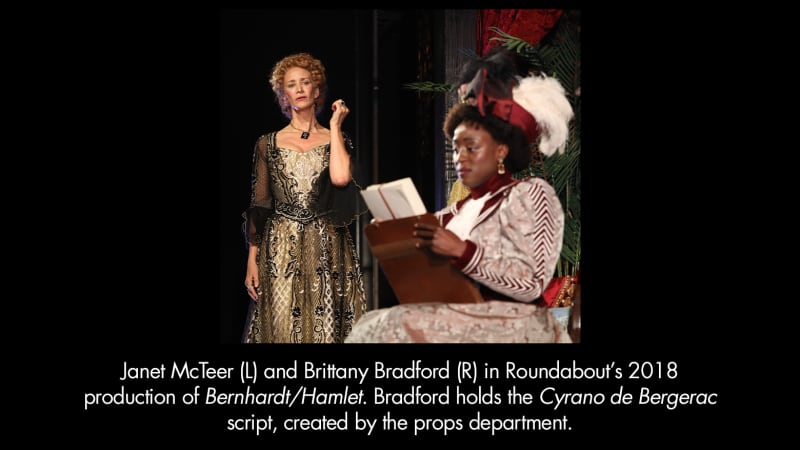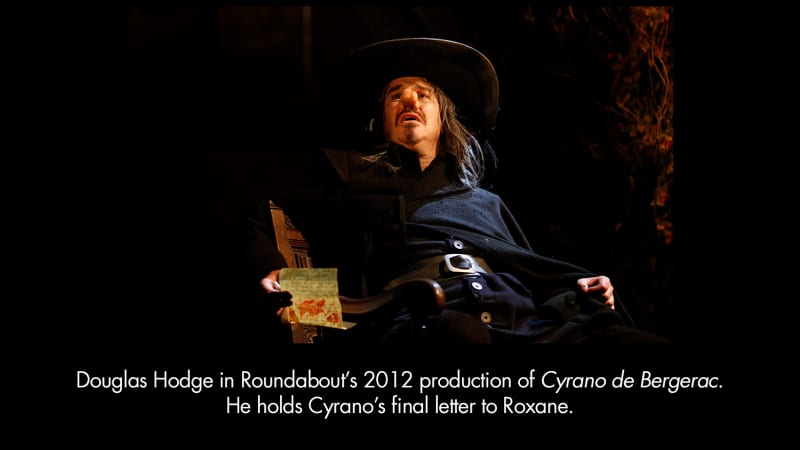The U.S. National Archives house the Declaration of Independence, the signing of which is the premise of the musical 1776. Unique and rare manuscripts of all kinds are carefully preserved and made accessible through archives around the world, whether they are legal documents like the Declaration, drafts of plays from our country’s playwrights (August Wilson’s papers), cultural objects (Julia Child’s kitchen), costumes used in theatre and film (Robert De Niro Collection) or just about anything you can imagine — there is probably an archive somewhere in the world that preserves that unique content to provide evidence of its existence for the future.
The world of special collection archives is an incredible resource for research, inspiration, and understanding of how art/ideas/stories/laws come to be. Thinking about the Declaration as a physical object — a piece of paper with handwritten lettering signed in ink by persons from US history — is an important part of understanding the value of archives. Just as words can tell stories, so too can objects. Think of an object from your childhood and pay attention to that memory. Does it make you happy, or sad, or angry? Objects can be used to elicit feelings or memories and when imbued with narrative or significance, those objects become important sources of information.
When the Declaration was signed, our country was hundreds of years away from computers, phones, copy machines, or the internet. Photography wasn’t invented for another 50 years, and it would take another 50 years for moving images to be invented. The fact that the Declaration, as an object, survived over 200 years is crucial because without this document to refer to, the course of U.S. history might be very different. The objects from history serve as evidence of events that took place and the archive’s role is to ensure that these objects are preserved as primary sources of fact and information.
The archives at Roundabout serve this function. While the records and objects found in our collections are not setting the course of history in quite the way the Declaration did, they are charting the course of theatre studies and are an important resource due to their size, scope, and intent. The records and objects of theatre production are critical entrance points for future generations of practitioners and scholars to review and to learn from the choices made by playwrights, directors, and actors at specific points in history. And while in today’s world we can also rely on photography and videography to provide additional evidence or witness to these ephemeral events, the retained documents and objects of performance serve as tangible memory objects and are perhaps the most critical points of entry when looking to better understand the how and why of specific productions.
Learn more about the job of an archivist in the Career Spotlight.
Given that 1776 dramatizes a real-life historic event, we can look back at Roundabout’s history through our archives to review other productions that explore real people and events and can rely on a wealth of objects and manuscripts to contextualize our understanding of these past works.



A person hides their face in a light green script, while a medium-skinned man with dark hair wearing a white shirt and dark vest speaks to a tall, light-skinned woman with curly hair in similar clothing.


\
In our 2018 production of Bernhardt/Hamlet (American Airlines Theatre), Janet McTeer played Sarah Bernhardt, a real-life stage actor who worked in the late 1800s and early 1900s and is known for playing a variety of male roles onstage, including Hamlet. Bernhardt also championed playwrights and other artists of her generation, and the fictionalized play Bernhardt/Hamlet infuses that history with a narrative that includes both artist Alphonse Mucha and playwright Edmond Rostand (whose work Cyrano de Bergerac is also based on a historical figure). Our archives contain objects from this play: one of the reproductions of the illustrated posters designed by Mucha, and props-made playscripts for Hamlet and Cyrano de Bergerac.


Roundabout has staged Cyrano de Bergerac twice in the last 50 years (1997, Laura Pels Theatre; 2012, American Airlines Theatre) and our archives include a large series of objects from the 2012 production. The love letter written by Cyrano for Christian to recite to Roxane and Cyrano’s final letter after being mortally wounded provide additional narrative and elements for research. One can explore choices made by the scenic/props designers, including the paper treatment used, writing styles, special effects, and can understand how and where the props were used through production photographs, moving image, props pre-set records, etc.


And finally, the 2008 production of Sunday in the Park With George (Studio 54), dramatizes the artist Georges Seurat and imagines the point in his life when he painted A Sunday on La Grande Jatte. The character George sketches during various scenes and the actor who portrayed George (Daniel Evans) sketched what he was looking at, in real time. Those sketches were retained as objects from the production and add yet another layer of evidence and investigation for research. In many ways, these objects are primary source documents as they embody elements of a production in ways that text simply cannot. These objects reveal choices made in a specific production (stylistic, scenic, budgetary, etc.) and provide tangible, discoverable evidence of those decisions.
Theatre archives are exceptional repositories of material culture and are used to shine light on trends in performing arts and shifts in our society more broadly. The next time you watch a play, make note of the costumes and objects on the stage and imagine how those records of performance might inform tomorrow’s playgoers, practitioners and scholars. What stories will these objects ultimately tell in the future?

